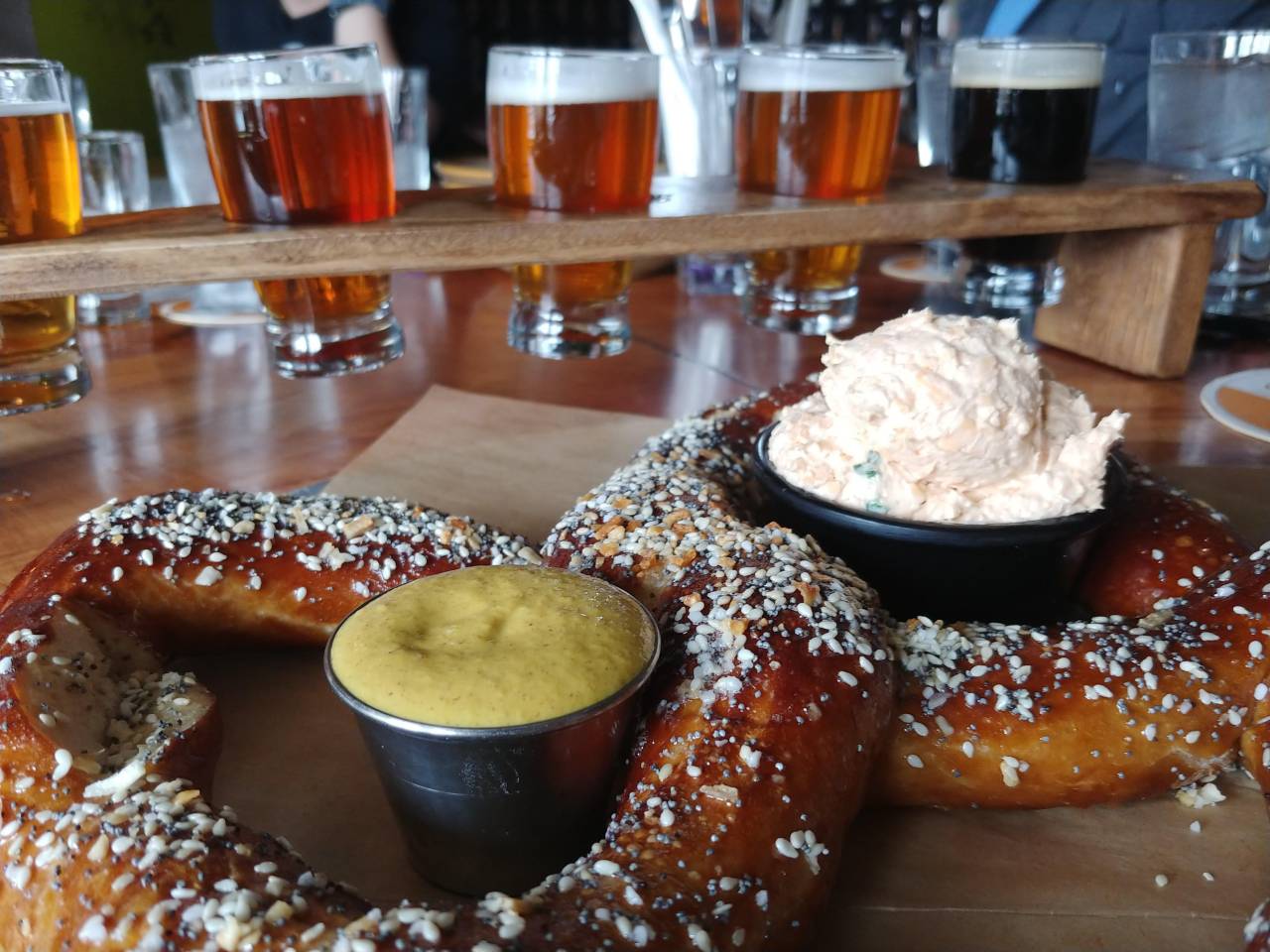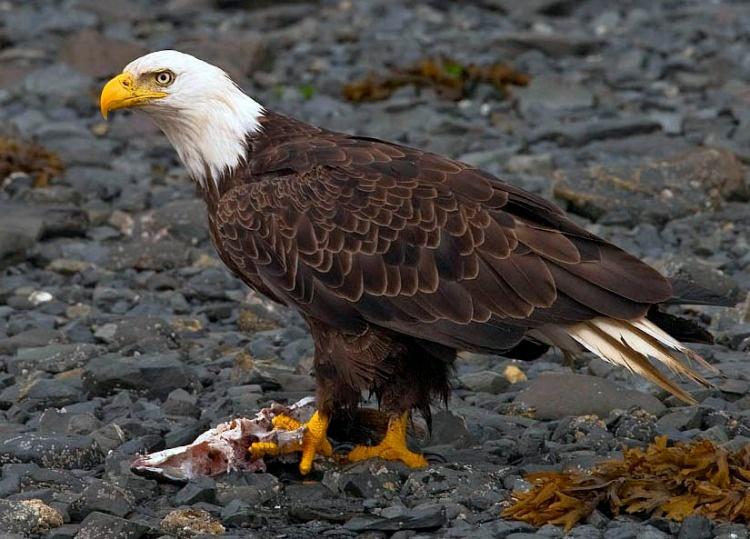Eagle-spotting is a thrilling and educational experience, but knowing where to go can be a challenge. Did you know that bald eagles are found in every U.S. state except Hawaii? This guide offers an extensive list of the best places across America to see these iconic birds in their natural habitats.
Let's delve into the world of eagle watching, unveiling nature's majesty like never before!
Key Takeaways
- Bald eagles are found in every U.S. state except Hawaii, and this article offers a guide to the best places across America to see these iconic birds.
- The best time to spot bald eagles is during the winter months when they follow food supplies and migrate from Canada to open water areas, usually between November and March.
- Some of the top locations for observing bald eagles include Alaska's Chilkat Bald Eagle Preserve, Arkansas's Lake Dardanelle, Alabama's Pickwick Lake, Delaware's Bombay Hook National Wildlife Refuge, California's Lower Klamath National Wildlife Refuge, Connecticut's Eagle Landing State Park, and Florida's Prairie Lakes or Chassahowitzka Wildlife Refuge.
Natural Range And Migratory Patterns Of Bald Eagles
While finding the right destination and time of year to go there is essential to seeing bald eagles. Understanding the bald eagle's natural range, nesting pattern, and diet is equally important if you want to find success here.
The Bald Eagle (Haliaeetus leucocephalus) is a beautifully magnificent of prey that is native to North America and serves as the national bird and symbol of the United States.
Natural Range:
Bald Eagles are primarily found in North America, ranging from Alaska and Canada throughout the continental United States. They prefer proximity to bodies of water such as rivers, lakes, marshes, and coastal areas.



Migratory Patterns:
Bald Eagles tend to exhibit a varied migratory behavior. Some populations are migratory, while others are non-migratory or have partial migration. In general, populations in the northern regions, including Alaska and Canada, tend to migrate southward during the winter months to find food sources and milder climates. The extent of migration depends on local food availability and weather conditions.
Nesting Patterns:
Bald Eagles build large nests called eyries or aeries. They prefer to nest in tall trees near water bodies, often selecting areas with minimal human disturbance. These nests are substantial structures made of sticks and lined with soft materials like grass, moss, and feathers. Bald Eagles are known to reuse their nests year after year, adding new materials and expanding the structure.
Nesting Sites:
Bald Eagles typically nest in mature trees near water, especially large conifers or hardwoods. They may choose locations with good visibility to monitor their surroundings and protect their nests. Look for nests in remote, undisturbed areas such as nature reserves, national parks, and wildlife refuges.
Dietary Needs:
Bald Eagles are opportunistic hunters and feed primarily on fish. However, they are also known to scavenge and eat carrion of other animals. Their diet may include waterfowl, small mammals, amphibians, reptiles, and occasionally, other birds. The availability of fish-rich habitats is crucial for their survival and reproductive success.
Recognizing a Bald Eagle
Bald eagles can be easily recognized by their distinctive appearance, with mature males' characteristic white head and females having a white head and tail contrasting against a dark brown body. Immature bald eagles have a mottled dark brown plumage that gradually transforms into the iconic adult coloration as they mature.
Immature Bald Eagles
Spotting an immature bald eagle poses a unique thrill for bird watchers. Unlike their more adult bald eagle counterparts with striking white heads and tail feathers, these younglings are cloaked in a chocolate-brown color.
Their body is dappled with mottled white markings which give them an appearance distinct from adult bald eagles. One can recognize them by observing their size - they are generally as large or larger than mature breeding bald eagles, because of their longer flight feathers that aid them in learning to fly.
These juvenile beauties migrate following food supplies during winter months just like adults, offering enthusiasts ample opportunities for sightings across the best locations such as Alaska Chilkat Eagle Preserve and North Platte National Wildlife Refuge among others.
Conservation efforts also focus on these young ones since preserving trees used young birds for roosting favors their survival and growth into majestic national icons.



Male Bald Eagles
Male bald eagles, America's national bird, are distinct creatures renowned for their stunning plumage. These birds exhibit distinctive white heads and tail feathers that make them a sight to behold in their natural habitat or at trusted preserves like Lower Klamath National Wildlife Refuge.
You'll notice these majestic birds possess straight wings during flight, setting them apart from the v-shaped wings of other species such as turkey vultures.
Not only do male Bald Eagles boast an impressive wing span but also a curved bill and clawed feet perfect for hunting prey around regions with open water, especially during winter months. Careful observation may reveal significant differences between these males and similar-looking species like the Greater Black-backed Gull which is notably smaller with varying flight posture.
However, it's crucial to remember not to harass or disturb a Male Bald Eagle - doing so is a federal offense carrying severe penalties.
Female Bald Eagles
Female Bald Eagles, often larger than their male counterparts, are truly fascinating both in terms of physical prowess and their keen senses. Their unique skill in identifying other bald eagles makes them pivotal to the delicate balance of the bald eagle population here.
This edge in recognition abilities also comes into play during migrations when spotting a safe nesting space is crucial, as seen at popular viewing spots like Lower Klamath National Wildlife Refuge or Chilkat Bald Eagle Preserve.
Respect for these majestic birds extends beyond mere admiration; as watchers gaze upon them at places such as nesting sites such as Lake Dardanelle or Cadillac Mountain, understanding their vital role can help enhance appreciation while ensuring environmental protection measures continue to be upheld across all prime eagle habitats.
By recognizing a Female Bald Eagle's importance and uniqueness, you're not only enriching your own bird watching experience but contributing positively towards conservation efforts too.
The Best Time to Spot Bald Eagles
Bald eagles are fascinating creatures to observe, and if you're planning a trip to see them in their natural habitat, timing is everything. The best time to spot bald eagles is during the winter months when they follow food supplies and migrate from Canada to open water areas.
This usually occurs between November and March, depending on the location.
One of the prime spots for eagle-watching is the Alaska Chilkat Eagle Preserve in Haines, Alaska. During the annual salmon run, around 4,000 bald eagles gather here, making it the largest concentration of these majestic birds in one place.
Another excellent location for wintering eagles is the Klamath Basin on the border of Oregon and California. It's home to a high concentration of bald eagles in the lower 48 states.
If you're looking for a closer-to-home experience, Starved Rock State Park in Illinois is a popular spot for bald eagle sightings during colder winter months. The park offers trolley tours and rustic trails that provide opportunities for birdwatching enthusiasts.
Keep in mind that early mornings are often when bald eagles are most active as they soar and hunt for prey, so be sure to set your alarm clock if you want to catch these stunning creatures at their best.
Remember: When planning your trip to see bald eagles, be aware that peak eagle season varies depending on location and weather conditions. Check local bird observation programs or contact wildlife refuges near your chosen destination for specific information about peak season dates.
Happy eagle-spotting!
Top Locations to Observe Bald Eagles
Discover the best spots to witness the majesty of bald eagles in their natural habitats across the United States. From Alaska's Chilkat Bald Eagle Preserve to Florida's Chassahowitzka Wildlife Refuge, these prime bald eagle populations and habitats offer breathtaking opportunities for wildlife viewing and outdoor adventure.
Don't miss out on a chance to see these magnificent birds up close – find your perfect eagle-watching spot now!
Arkansas: Lake Dardanelle
Lake Dardanelle in Arkansas is a prime location for observing bald eagles. This stunning lake offers year-round opportunities to spot these majestic birds in their natural habitat. With diverse habitats and a nesting pair of bald eagles nest there, Lake Dardanelle State Park provides the ideal setting for eagle watching.
Whether you're scanning the tree lines or looking up at the sky, you're bound to see these incredible creatures soaring overhead or perched on trees along the shoreline. Winter months are particularly exciting as many bald eagles congregate in this area, creating a unique and rewarding experience for birdwatchers and nature enthusiasts alike.
Don't miss out on the chance to witness these magnificent birds in action at Lake Dardanelle!
Alabama: Pickwick Lake
Pickwick Lake in Alabama is a premier destination for eagle watching. With its breathtaking scenery and diverse ecosystem, it provides the perfect habitat for bald eagles. The lake is renowned for its abundant population of these majestic birds, offering visitors the opportunity to witness their spectacular flight and natural behavior up close.
Whether soaring high in the sky or perched on a tree branch, bald eagles can often be spotted near Pickwick Lake, creating unforgettable moments for nature enthusiasts and photographers alike.
Educational programs and guided tours are available at this serene location, allowing visitors to learn more about these magnificent creatures while enjoying the peaceful surroundings. If you're a birdwatching enthusiast or simply love exploring the great outdoors, Pickwick Lake is a must-visit destination that guarantees an awe-inspiring experience with our national symbol - the bald eagle.
Alaska: Chilkat Bald Eagle Preserve
Located along the Chilkat River, the Chilkat Bald Eagle Preserve in Alaska is a must-visit destination for any wildlife enthusiast. This preserve is home to one of the largest concentrations of bald eagles in the world, in large part because of the abundant amount of spawning salmon in the rivers, making it an ideal spot to observe these majestic birds in their natural habitat each fall. That's why this area is also host to the Alaska Bald Eagle Festival each year.
During the fall and early winter months, when the eagle population is at its peak, visitors can witness as many as 4,000 eagles, including hundreds bald eagle breeding pairs gathered together, attracted by the abundance of spawning salmon in the area.
The preserve offers various viewing opportunities, including guided tours and designated viewing areas where visitors can get up close and personal with these incredible creatures. Educational programs and workshops are also available to learn more about bald eagles and their conservation efforts.
Delaware: Bombay Hook National Wildlife Refuge
Delaware's Bombay Hook National Wildlife Refuge is a prime location for observing bald eagles in their natural habitat. This refuge is renowned for its wintering population of these majestic, birds of prey, providing visitors with a unique and awe-inspiring opportunity to witness them up close.
With open marshes and waterways, Bombay Hook offers an ideal setting for eagles to gather around areas of open water during the colder months. The refuge's commitment to conservation efforts has helped protect the eagle population, making it one of the top spots in Delaware—and indeed in the country—for eagle watching enthusiasts.
California: Lower Klamath National Wildlife Refuge
The Lower Klamath National Wildlife Refuge in California is a haven for bald eagles, making it one of the best places to observe these majestic birds. Situated in the heart of the Klamath Basin, this refuge attracts a high concentration of bald eagles during the winter months when they migrate from Canada to open water areas.
Visitors can embark on RV trips and explore designated viewing sites where they can scan tree lines and overhead for eagle sightings. The refuge offers an unforgettable experience, with its stunning natural beauty and abundant wildlife population.
It's essential to respect these incredible creatures by observing them from a distance and refraining from any actions that may disturb or harass them, as this is considered a federal offense.
Connecticut: Eagle Landing State Park
Eagle Landing State Park in Connecticut is a prime location for observing bald eagles. Situated near the picturesque Connecticut River, this park provides an ideal habitat for these majestic birds.
Visitors can witness bald eagles soaring gracefully overhead or perched on branches, offering perfect opportunities for bird photographers and enthusiasts alike. The best time to catch a glimpse of these amazing creatures is during the winter months when eagle activity is at its peak.
With Connecticut's bald eagle population on the rise, Eagle Landing State Park offers a serene environment where visitors can appreciate nature and contribute to the conservation efforts of these magnificent birds.
Florida: Prairie Lakes or Chassahowitzka Wildlife Refuge
Florida is home to nesting bald eagles and two exceptional locations for observing bald eagles - Prairie Lakes and Chassahowitzka Wildlife Refuge. These prime spots offer visitors the opportunity to witness these majestic birds in their natural habitat.
Florida boasts an estimated 1,500 nesting pairs of bald eagles, making it a top destination for eagle enthusiasts. Both the Prairie Lakes Unit and Chassahowitzka Wildlife Refuge provide designated viewing sites where visitors can scan the tree lines and overhead areas for eagle sightings.
The best time to visit these locations is during the winter months when bald eagles migrate from Canada to open water areas, creating excellent opportunities for eagle watching. So, whether you're a bird photographer or looking for a family adventure in nature, don't miss the chance to see these iconic birds at Prairie Lakes or Chassahowitzka Wildlife Refuge in Florida's picturesque landscape.
Iowa: Upper Mississippi River National Wildlife and Fish Refuge
In winter, bald eagles – sometimes numbering in the hundreds – hunt the open water below the river's locks and dams, swooping down to catch fish. Take a free shuttle bus from Clinton Community College to Lock and Dam 13 for the January 10 event, co-sponsored by the refuge. The refuge surrounds the lock and provides excellent viewing opportunities. Aerial displays are at their peak from January through March.
Maine: Cadillac Mountain, Acadia National Park
Maine's Cadillac Mountain and Acadia National Park are renowned for their stunning natural beauty and impressive concentration of bald eagles. As one of the top locations in the country to observe these majestic birds, this region attracts birdwatchers and nature enthusiasts from all over.
Thanks to careful conservation efforts and protected habitats, the population of bald eagles in Maine has thrived, making it a prime spot for eagle watching. With designated viewing sites and an abundance of tree lines to scan more bald eagles, there's no better place to witness these iconic creatures soar through the sky with their curved bills, clawed feet, and large white tails.
So grab your binoculars and head to Cadillac Mountain or Acadia National Park for an unforgettable experience in the heart of bald eagle territory.
Maryland: Conowingo Dam
Located in Maryland, the Conowingo Dam is renowned for being one of the best spots to witness bald eagles in action. With an estimated 75-100 bald eagles flocking to this area, it has become a popular destination for bird enthusiasts and nature lovers alike.
The dam's strategic position along the Susquehanna River provides ideal conditions for these majestic birds, offering ample food sources and nesting opportunities. Every year, during their annual migration from Canada to open water areas, bald eagles can be seen soaring above the dam and diving into the water below to catch fish.
For those seeking a thrilling and memorable experience, visiting the Conowingo Dam is an absolute must.
Michigan: Shiawassee National Wildlife Refuge
Located in Michigan, the Shiawassee National Wildlife Refuge is a prime location for observing bald eagles. Additionally, this refuge is one of the top spots in the state to see golden eagles and catch a glimpse of these majestic birds in their natural habitat.
As part of conservation efforts, Congress passed laws in the 1940s to protect bald eagles and their habitats, leading to a slow increase in young eagles population over the years. Thanks to these protective measures, visitors can now witness these magnificent creatures soaring through the sky or perched on tree branches at Shiawassee National Wildlife Refuge.
Don't miss out on this incredible opportunity to experience the beauty and grandeur of bald eagles in Michigan!
Missouri: Squaw Creek National Wildlife Refuge
About 100 miles north of Kansas City you will find Bald eagles generally hang out here all winter unless there's a deep freeze. Spring migration brings in newcomers from February to April. A 1.5-mile hiking trail called Eagle Overlook offers eagle viewing from the wetlands.
Montana: Missoula
Montana's stunning landscape provides the ideal setting for spotting bald eagles, with Missoula being one of the prime locations in the state. Situated along the Clark Fork River and surrounded by majestic mountains, Missoula offers a unique opportunity to observe these amazing birds up close.
As part of their winter migration, bald eagles flock to this area in search of open water and abundant food sources. With its diverse habitats and expansive river systems, Missoula becomes a haven for these incredible creatures during the colder months.
Soak in the beauty of Montana while witnessing the awe-inspiring sight of bald eagles soaring through the sky above you.
New Mexico: Bosque Del Apache National Wildlife Preserve
Bosque Del Apache National Wildlife Preserve in New Mexico is a must-visit destination for eagle enthusiasts. This picturesque preserve attracts bald eagles from November to March, making it an ideal spot for eagle watching during the winter months.
Along with the majestic bald eagles, visitors can also admire 169 other bird species that call this preserve home. The diverse wildlife and habitats in Bosque Del Apache create a rich environment for birds and provide ample opportunities for wildlife photography and birdwatching.
Whether you're a seasoned birder or just starting your birdwatching journey, Bosque Del Apache promises an unforgettable experience surrounded by nature's beauty.
Nevada: Carson Valley
Carson Valley in Nevada is a prime location for observing bald eagles in their natural habitat. From December to February, these majestic birds flock to Carson Valley as well as the Sierra Mountains for the winter and are seen in vast numbers during during the birthing season at local ranches.
It's an incredible sight as bald eagles feast on cow placentas, taking advantage of the plentiful and abundant food supply here. Visitors can embark on RV trips in Carson Valley to spot these eagles up close and personal.
If this is something you want to experience, make sure to check out the Eagles and Ag festival held each January.
Families will create unforgettable memories while immersing themselves in the beauty of nature and witnessing the national bird of America in action. If you're planning a trip to observe bald eagles, be sure to include Carson Valley on your itinerary and experience this awe-inspiring display of wildlife firsthand.
Oklahoma:
There are several spots in Oklahoma that are popular spots to see bald eagles during the winter season. These include: Wichita Mountains Wildlife Refuge and Sequoyah National Wildlife Refuge.
Tennessee: Reelfoot National Wildlife Refuge
There is a viewing tower over Reelfoot Lake, where the abundant ducks and geese draw eagles. Get a close-up look at two active bald eagle nesting sites. Bald eagle numbers peak in February, with more than 200 wintering eagles around Reelfoot Lake. Resident eagles account for around 32 nests. Some parts of the refuge close in the winter as waterfowl sanctuary, but two refuge observation decks remain open year-round to accommodate visitors. Reservations are required.
Utah: Bear River Migratory Bird Refuge
This spot near Brigham City, Utah is especially popular for spotting bald eagles during the winter as the migrate.
Virginia: Elizabeth Hartwell Mason Neck National Wildlife Refuge
This suburban Washington, DC location was the first refuge established for the protection of bald eagles and so it isn't surprising that Mason Neck National Wildlife Refuge is a leading place to spot for eagles today. The refuge lies along a section of the Potomac River that is a breeding and resting area for bald eagles. The Great Marsh Trail offers a good overlook from November through March, when eagles are building nests and laying eggs.
Washington: Upper Skagit River
The Upper Skagit River in Washington is a prime location for observing bald eagles. During the winter months, this scenic river offers a natural habitat for these majestic birds. Visitors are encouraged to use designated viewing sites along the river, where they can scan tree lines and overhead to spot eagles.
As eagles tend to congregate around areas of open water, the Upper Skagit River provides ample opportunities for eagle sightings. With its significant population of bald eagles during the winter season, it's no wonder that this spot has become a popular destination for wildlife enthusiasts.
When planning your eagle-watching trip, be sure to dress warmly and park in designated areas for safety and comfort. And if you do happen to spot an eagle along the Upper Skagit River, don't forget to report your sighting to the relevant fish and wildlife authorities.
West Virginia: New River Gorge National Park and Reserve
One of the top locations for observing bald eagles is the stunning New River Gorge National Park and Reserve in West Virginia. This picturesque park offers designated viewing sites where visitors can scan the tree lines and overhead areas for majestic bald eagle sightings.
With its rivers and streams, this park provides ideal habitats for eagles to congregate around areas of open water. Home to various endangered species' of wildlife, including the iconic bald eagle, this national park offers a truly immersive experience in nature's beauty.
To make the most of your bald eagle viewing adventure, plan your visit during the winter months when the resident bald eagles are most active. Remember to exercise patience while observing them as they may take some time to appear.
Wyoming: Yellowstone and Grand Teton National Parks
Yellowstone and Grand Teton National Parks in Wyoming are renowned as prime locations for observing bald eagles in their natural habitat. These parks offer a diverse range of ecosystems, including geothermal features and breathtaking landscapes, which provide ideal habitats for the majestic birds.
With a thriving bald eagle population, visitors have a high chance of spotting these magnificent creatures soaring through the clear blue skies. During winter months, when they congregate around areas of open water, is the best time to spot them.
So keep your eyes peeled while exploring these parks, as you never know when you might witness the awe-inspiring beauty of a bald eagle in flight.
Noteworthy Eagle Watching Spots On A Cruise Vacation
Cruise vacations offer an exceptional opportunity for guests to view bald eagles - often from the comfort of their balcony cabin as they sail through some of the most picturesque locations in the world. The primary destination people think about here is an Alaska Cruise (especially inside passage itineraries since you can see local bald eagles quite easily with the naked eye as you cruise through the coastal islands of Alaska, British Columbia, and Washington State).
However, a small ship river cruise from Portland Oregon exploring the Snake and Columbia Rivers as well cruises between Montreal and Boston exploring the Canadian Maritime Provinces and their many islands are a spectacular opportunity to see bald eagles too.
Alaska Cruises
Alaska cruises offer a fantastic opportunity to witness the majestic bald eagles in their natural habitat. One standout location is the Alaska Chilkat Eagle Preserve in Haines, which boasts the largest concentration of bald eagles with approximately 4,000 birds during the annual salmon run.
Another notable spot is the Klamath Basin, situated on the border between Oregon and California. Here, visitors can catch sight of these iconic birds as they follow food supplies and migrate from Canada to open water areas during winter months.
On the other hand, many excursion operators such as one of our favorites in Ketchikan offer tours specifically designed to help guests get up close and personal. You can of course also see plenty of bald eagles on any of the cruise stops but especially Icy Straight Point.
So if you're looking for an unforgettable eagle-watching experience while enjoying a cruise vacation, Alaska should be at the top of your list.
Fall Cruise To Canada & New England
One of the most exciting ways to witness bald eagles in their natural habitat is by embarking on a fall cruise to Canada and New England. Along the picturesque cruise route, passengers have the opportunity to spot these majestic birds soaring through the skies or perched on tree branches along the coastline.
While the "American" Bald Eagle is a common resident to these destinations in the summer, cruises here are primarily available in the fall and you'll find plenty of bald eagles in spots like Main and Nova Scotia. Like with Alaska, your cruise will offer many options for seeing bald eagles in the best locations.
However, like any cruise vacation where you want to make sure to see something specific - work with a travel advisor to pick the best cruise line, cabin type, and time of year to give you the best chance at seeing and doing what you dream of.
Fall cruises to Canada and New England may not be the most glamourous but this is one of my favorite places to visit if nature and exploration is important to you. This makes it an ideal destination for wildlife enthusiasts and bird photographers alike. With stunning scenery and thrilling wildlife encounters, a fall cruise in this region offers a unique and unforgettable eagle-watching experience.
Snake River Cruises in Oregon and Washington
Snake River Cruises in Oregon and Washington are a sort of hidden gem that many people don't consider when planning a cruise vacation. However, if you want to see eagles ... lots of them ... doing a cruise with Uncruise or one of the other small ship cruise lines that operate here provides a unique opportunity to witness the majesty of bald eagles in their natural habitat. This scenic river, known for its remarkable eagle population, provides an immersive experience for bird enthusiasts.
As you cruise along the Snake River, expect to see these iconic birds flying overhead and perched in trees along the riverbanks. It's a breathtaking sight that will leave you with unforgettable memories of observing bald eagles up close.
So, if you're looking for an adventure that combines stunning scenery and incredible wildlife sightings, don't miss out on a Snake River cruise in Oregon or Washington.
Best Spots For Seeing Wintering Bald Eagles
Our top pick for where to see bald eagles during the winter months is a destination such as Carson Valley, Nevada or the Klamath Basin located on the California-Oregon border, which hosts more than 1,000 bald eagles each winter.
On the other hand, with Eagles found in 49 states, it isn't uncommon to spot wintering bald eagles in states less commonly associated with eagle spotting during the winter such as Ohio, Texas, Louisiana, and Florida.
During the winter - just as during the rest of the year, habitats where you find large trees and ice-free water with plenty of fish to catch. Increasingly though, as Bald eagles expand their habitat into areas more den sly occupied by humans, it isn't uncommon to see them scavenging for food including road kill and carcasses left behind by hunters.
While Bald eagles are a fairly hearty bird that can withstand periods of extreeme cold, they prefer more moderate climates.
Eagle Watching Etiquette and Viewing Tips
- Respect the bird's habitat and do not disturb their nests or roosting areas.
- Keep a safe distance from the eagles to avoid causing stress or disrupting their natural behavior.
- Use binoculars or a telephoto lens to observe the eagles up close without intruding on their space.
- Stay quiet and avoid making sudden movements that could startle or frighten the birds.
- Do not use flash when taking photographs of eagles, as it can startle them and interfere with their hunting activities.
- Dispose of trash properly and leave no trace. Keep the environment clean for both the eagles and other wildlife.
- Follow all park rules and regulations, including staying on designated trails and respecting any closures or restrictions in place to protect the eagles.
- Observe from a stationary position rather than constantly moving around, as this can disrupt the birds' routines and make them wary of human presence.
- Be patient and allow time for the eagles to adjust to your presence. They may become more comfortable over time and display natural behaviors when they feel safe.
- Educate yourself about bald eagle biology, behavior, and conservation efforts to better understand and appreciate these majestic birds.
In conclusion, the United States offers a multitude of breathtaking locations to witness the majestic beauty of bald eagles. From the Alaska Chilkat Eagle Preserve to Florida's Chassahowitzka National Wildlife Refuge, these spots provide prime habitats for spotting these iconic birds in their natural environment.
Whether you're an avid birdwatcher or simply seeking a unique outdoor adventure, exploring these best places will surely leave you in awe of the remarkable presence of bald eagles. So grab your binoculars and get ready for an unforgettable eagle-watching experience!
